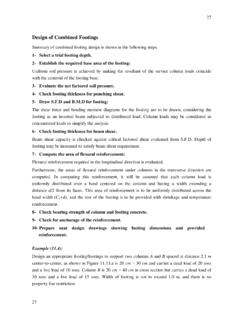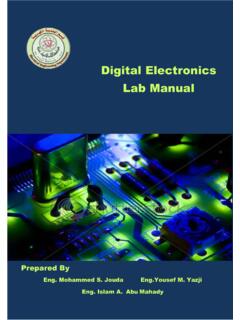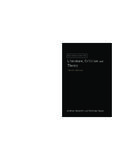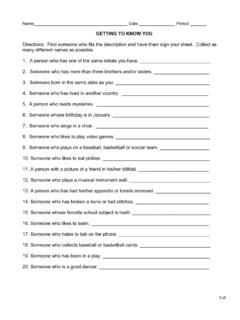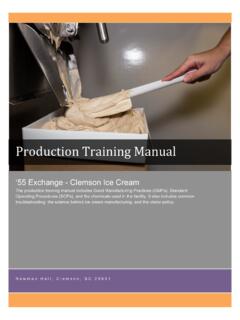Transcription of FIRST AID TEST - Islamic University of Gaza
1 - 1 - FIRST AID TEST 367 West Robles Ave Santa Rosa, CA 95407 707-206-9988 Revised April 21, 2008 - 2 - West County Transportation Agency This test was developed to help school bus driver s study and prepare for the California Special Drivers Certificate (School Bus Certificate) exam given at the local California Highway Patrol Office. The material covered in the FIRST aid exam is derived from the following study guides: American Red Cross Standard FIRST Aid book American Red Cross Community FIRST Aid and Safety book Guidelines for taking written tests : Take a couple of slow, deep breathes, remind yourself to relax. Use all the time to complete the test.
2 Answer every question in order. (The FIRST time through answer the ones you know, the ones your not sure off circle the question or put some type of mark to indicate the question there might be another question that can answer the one your not sure of or will ring your bell to the correct answer.) Always read the question in its entirety. Read every answer thoroughly. (Always read and think about each of the choices, no matter how certain you are about the answer there may be a more correct answer) Read the question again prior to picking the correct answer. Eliminate obvious wrong answers. Pick the most correct answer. Then read the question again with the answer attached to the end to see if it makes sense. Remember your FIRST choice is usually correct.
3 The Basics on taking practice tests Please answer questions on answer sheets provided with tests . You may want to study all of the tests you were given in the classroom prior to taking these tests . Read and review the American Red Cross Standard FIRST Aid book. Once you decide to take the tests , do not look up every question you can t answer, this will take you too long. Just answer the question to your best ability and wait until we correct them. This will help you find the areas you will want to concentrate your study time to. This FIRST Aid Exam comprises 97 multiple-choice questions. Good Luck! - 3 - West County Transportation Agency FIRST AID TEST 1) Your check of the scene suggests that a victim has suffered an electrical shock.
4 The FIRST thing to do a) Cover all burns with a dry loose dressing. b) Ask a bystander to help you move the victim. c) Place the victim on one side with the head down. d) Make sure the power is turned off. 2) A victim of a car accident has just vomited and now appears to be coughing up blood. He is breathing very quickly and his pulse is weak and fast. What is most likely wrong? a) He is having a seizure. b) He has internal bleeding. c) He is having a heart attack. d) He is having a diabetic emergency. 3) You are caring for a victim with a burned hand. Put the hand in cool water a) The burns are very deep b) There are burns with open blisters. c) The burns are minor with no open blisters. d) You should put the hand in cool water for all of the above.
5 4) In general a splint should a) Loose, so that the victim can still move the injured limb. b) Snug, but not so tight that it slows circulation. c) Tied with cravats over the injured area. d) None of the above. 5) A victim has lost a lot of blood through a deep cut in his leg. He is breathing fast and seems pail and restless. He is a) Having a stroke. b) Having a heart attack. c) In shock. d) Choking. 6) You suspect that a person has been poisoned. She is conscious. Your FIRST call should be a) The Poison Control Center or your local emergency phone number. b) The victim s physician. c) The hospital emergency department. d) The local pharmacy. 7) Which would you do when caring for a seizure victim? a) Remove nearby objects that might cause injury.
6 B) Place a small object, such as a rolled up piece of cloth, between the Victim s teeth. c) Try to hold the person still. d) All of the above. 8) Splint an injury to a muscle, bone, or joint only a) You have to move or transport the victim. b) You can do so without hurting the victim. c) You have splinting materials available. d) Both a and b 9) For which of the following burn victims should you immediately call your local emergency phone number? a) A 40 year old man who has burned his hand with hot coffee. b) A 68-year-old woman who has a blistered grease burn on her hands and arms. c) A 26-year-old woman who has a sunburn on her shoulders. d) All of the above. - 4 - 10) A 15-year-old boy has just splashed a chemical on his face.
7 After sending someone to call for an ambulance, you a) Cover the burned area. b) Have the victim stay calm until ambulance arrives. c) Flush the burned area with large amounts of water until the ambulance arrives. d) Immediately drive the victim to the hospital. 11) Why should you cover burns with a clean or sterile dressing? a) To prevent infection. b) To cool burned area. c) To keep the burned area warm. d) Both a and c 12) You find a person at the bottom of the stairs. He appears to have fallen and seems badly hurt. After sending someone for help, you a) Roll the victim onto his stomach keeping the head and back in a straight line. b) Roll the victim onto one side. c) Position victim onto one side. d) Attempt to keep the victim from moving.
8 13) A victim has a large piece of glass sticking out of her leg. You a) Leave the glass in her leg and control the bleeding. b) Call your local emergency phone number. c) Remove the glass and then control the bleeding. d) Both a and b 14) What should be your FIRST concern at the scene where a person has been seriously burned? a) Checking the scene for safety. b) Checking the victims breathing and pulse. c) Calling your local emergency phone number. d) Cooling the burned area. 15) A woman has fallen and burned her ankle. She says she heard something snap. She looks pale and is sweating. What should you do? a) Have the victim walk on the injured ankle. b) Care for the injury as if it were serious. c) Apply heat and elevate the injury.
9 D) Apply a dressing and loosely bandage. 16) Which of the following should be done for a person experiencing a heat related illness. a) Keep the victim warm. b) Force the victim to drink fluids. c) Apply cool wet cloths. d) Place the victim in warm water. 17) You feel a sudden sharp pain in the bottom of your left foot. You look at the bottom of your left shoe and see a tack sticking in your shoe. What type of wound do you probably have? a) Avulsion b) Bruise c) Scrape d) Puncture 18) Which should be part of your care for a severely bleeding open wound? a) Allow the wound to bleed in order to minimize infection. b) Apply direct pressure and elevate the injured area. (If no broken bones) c) Use a tourniquet to stop all blood flow.
10 D) Both b and c - 5 - 19) What should you do if you think a victim has serious internal bleeding? a) Apply heat to the injured area. b) Call your local emergency phone number for help. c) Place the victim in a sitting position. d) Give fluids to replace blood loss. 20) Which of the following behaviors reduces your risk for injury? a) Always wearing a safety belt when riding in automobiles. b) Limiting intake of alcohol. c) Limiting intake of foods high in cholesterol. d) Both a and b 21) Which is the FIRST step when caring for bleeding wounds. a) Apply direct pressure with a clean or sterile dressing. b) Apply pressure at the pressure point. c) Add bulky dressings to reinforce blood soaked bandages. d) Elevate the wound.

